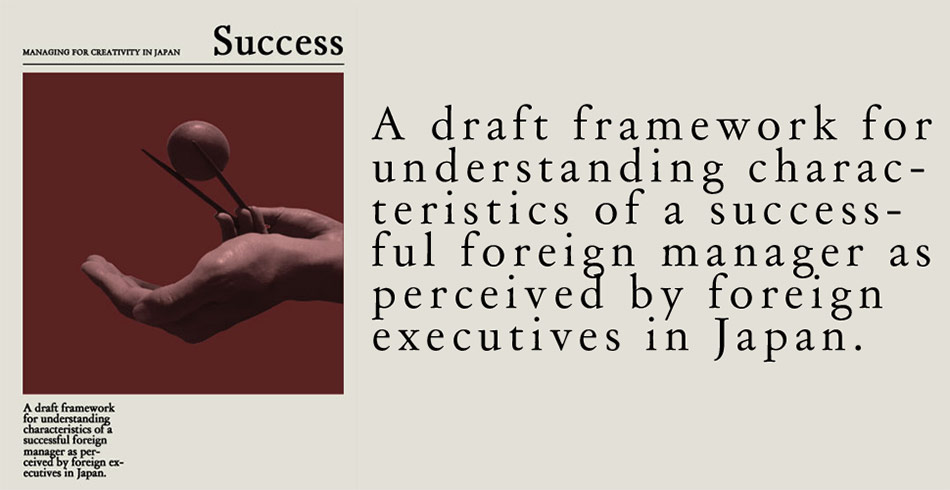Managing for Creativity in Japan Talking with Foreign Executives in Japan
Patterns Tagged ‘change’
A Hands-On Management Environment
“….The amount of time spent face-to-face in Japan is probably double or triple what a Westerner would expect from their manager….”
Being a Change Agent
“…it would be very difficult for a Japanese manager to reverse his whole set of behavioural characteristics and suddenly become a change agent…..”
People First
“In Japan, the most successful managers are people that care about people. I think that you can make a lot of mistakes (and get away with it) if people think that you are doing it for the right reasons. You can create a lot of change and discomfort if people understand that your motivations are […]
You always get what you always got
“The old adage “if you always do what you’ve always done then you always get what you always got” is very true in Japan. You get very consistent results, but where does that leave you on the creativity and innovation barometer?” **************************************************** This post is part of a series of excerpts from interviews with foreign […]
Following the Person Before You
“Initially however, it was assumed that the way they were doing it was the only way to do it. We had to sit down and say “no, you are free to do what you want as long as you meet the needs of these internal customers”. To assume that the person before you must have […]
The Passive-Aggressive
“If you look at change models, you know on average, about 2% of the population enjoys change, but another 16% will go along with it because they can see that it’s required. Another 30% will go along with it if the key opinion leaders do, because they are just kind of followers and another 30% […]
Foreigners and Change Management
“Foreigners may have an edge on the change management roles because it is recognized that it is difficult for an internal person to be the nail that sticks up. Sometimes it’s just easier to find people who are willing to come in and go through the learning curve of the organization – there are more […]

